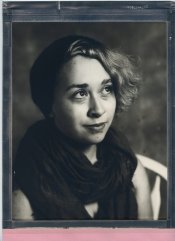bvy
Member
I have a 12 inch lens on an 8x10 camera. Now I extend the bellows to 18 inches, to focus on an object closer to the camera. The background is now out of focus, but is the angle of view of the (out of focus) background (at infinity) the same as I would see on an 18 inch lens focused at infinity? I think it is.
Here's where I'm a bit confused. I'm using my 12" lens to make a portrait of a person right in front of my camera. To focus, I have to extend the bellows to 18" as described. Looking at 35mm equivalents, a 12" lens on 8x10 is roughly equivalent to 45mm; 18" to 65mm. Is the resulting portrait going to have the look ("compression") of a 45mm lens or 65mm lens equivalent?
I think it's the latter. But intuition tells me that the closer I put my lens to the subject, the more unnatural it's going to look with widened features. I can bring the person closer and focus longer... Clearly I'm missing something.
Here's where I'm a bit confused. I'm using my 12" lens to make a portrait of a person right in front of my camera. To focus, I have to extend the bellows to 18" as described. Looking at 35mm equivalents, a 12" lens on 8x10 is roughly equivalent to 45mm; 18" to 65mm. Is the resulting portrait going to have the look ("compression") of a 45mm lens or 65mm lens equivalent?
I think it's the latter. But intuition tells me that the closer I put my lens to the subject, the more unnatural it's going to look with widened features. I can bring the person closer and focus longer... Clearly I'm missing something.




